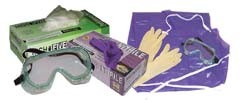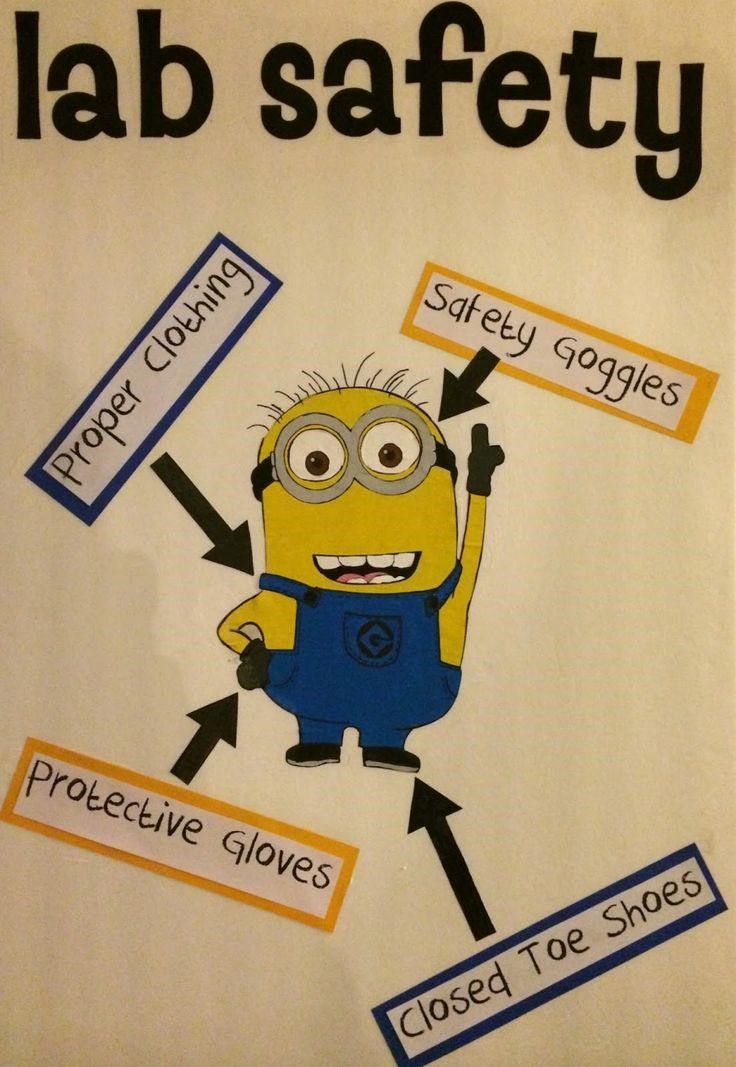Posted by Karen Nelson on Apr 12th 2016

Like us, some students positively adore bio lab. Getting down and dirty with all of those lab materials is the perfect complement to their hands-on learning style and they don’t care about topic or content —they just love doing! But then, the opposite is also true. Some kids would rather listen to a lecture and take notes then get up close and personal with a frog or the workings of the heart muscle. Here are eleven tips to get all of your students excited about biology lab.
1.“Don’t just do labs, be scientists!”
Sometimes teaching is all about the tone you set. A lab coat and goggles can build excitement and take some of the “ick” out of touching a wriggly worm. Latex or nitrile gloves can help too. Making it about science and learning rather than what may be on the lab table in front of them is often just the distance that some kids need. Offer a quick reminder of the purpose of the day’s project at the beginning of lab to help students “stick to business” and not get wrapped up in emotion. High school teacher Lane M. says, “Anytime there’s potential for an “eeeww!” moment, I anticipate and celebrate it. The kids love how I get into the “grossness” and I think that my enthusiasm and lack of fear helps them to learn that it’s just part of the world we live in, and they relax that much more.”


Source:BioCorp
2. Dive in without time for angst.
Sometimes kids do best when they can just jump into a lab without devoting too much thought to what they’re working with. One science teacher we know likes to keep things moving along at a fairly decent clip so students don’t have too much time to think about the concepts that might make them squeamish. For example, if you’re going to do an activity with owl pellets, don’t spend a lot of time dwelling on how the bones ended up in the pellet. Just jump in and see what you can find.
3. Consider the bribe or at least the peppermint.
Ok, we don’t actually endorse full-on bribery, but there’s nothing wrong with a little extrinsic motivation every now and then. Teacher Gina D. suggests, “I give my students peppermints as each task is complete.” The peppermints are a reward, a distraction and can also be helpful if the particular lab has an associated strong odor. Along the same lines, teacher Rachel M. suggests picking up “some nice smelling soap or lotion for students to use after lab. If they participate and get the work done, they can use the special soap and lotion. It works for me.” Little treats to look forward to can often make wary students more willing.
4. Set Time Limits
Knowing that it won’t last forever makes a difference whenever a person has to do something that they might find uncomfortable. Using a timer to help kids move from one step to the next can be helpful, particularly if kids know what the timeline looks like ahead of time. Seeing that only 20 minutes of the lab time is actually devoted to the portion that they may be nervous about can be comforting to some students.
5. Feed them the appropriate response.
You can help kids learn to channel their gut reactions. Sometimes kids respond to a situation negatively just because they don’t know how else to react. Science teacher Michelle K. writes, “I prompt my middle school kids to say “Oooh! Science!“ whenever there is anything gross. Most of the time when kids say, “eww” or giggle, they just need to get something out because it’s the first time they’ve seen something like that. Having them say “Oooh, science!” allows for a neutral response.”
6. Choose compelling concepts.
Help students understand the purpose of the lab, and exactly what they can learn from it and why it’s so important. They might be more willing to take risks that way. Tell them why this lab is fascinating. Tell them what you expect them to learn. Help them understand why it matters. If you can make a frog dissection sound like the most exciting and entertaining science lab they’re going to experience all year, then even your reluctant students just might go along with you for the ride. Let them know that this is the lab that over the years has inspired many students to pursue medicine, biology or veterinary medicine as a career. Biology teacher Colleen F. says, “I always tell them that gross things are science awesomeness and that this will be the best thing they do all day. I find my over-enthusiasm for science helps, even if I get a few strange looks.” We know that our own energy as teachers can set the tone for the room. Biology lab is the time to use your positive energy to your advantage and move kids forward.
7. Put the kids in charge.
No, not, totally in charge —that could lead to disaster. But give your students some autonomy. Ask them to design their own lab. Teri at Crazy Teaching asked her physics students to propose and execute labs which answer key physics questions. Teri says, “Over the years, I had to learn that student self-designed labs are exercises in thinking and creativity, not about content and getting it "right." Instead, these labs are about giving students the opportunity to make their own mistakes, realize they made the mistakes, and then allow them to fix those mistakes. It's more about the process than the science to me, about seeing them learning how to learn.“ Students will always do better when they own their learning process, whether it’s physics, biology or even English.
8. Use humor
A little bit of humor can go a long way towards lightening up a tough topic. Biology teacher Mary M. reports that she hosts funny contests during bio lab time. She invites students to face off with battles for the longest intestine or the best stomach contents. Other teachers try to start the class off with a laugh. Having one of these images on the projector as students walk in the room might be just enough to set a more relaxed tone and relieve some of that nervousness that some kids are feeling.


Source:https://www.pinterest.com/pin/262686590742387444/


Source:http://www.buzzfeed.com/kellyoakes/biology-jokes?utm_term=.cq3DkGBVe#.vlDVn094D
9. Ask Questions
There’s almost no better place to implement the inquiry model of education than in the science lab. Asking students key questions to guide their learning, rather than spilling out endless facts can up your engagement levels. If your students ask, “What are we supposed to do next?” Turn it around. Ask them what they think they should do next. Make a list of “why” questions with your class. Getting students involved like this invites them into ownership of the activity. They’re going to learn it if they have to own it.
10. Teach the Controversy
We can dance around the issue all day, but the truth is, biology lab can be controversial. Some students are ethically opposed to dissection. If you can address the issue directly with your students to help them explore the conflict, your student might be more willing to participate in the lab. Teach them how specimen for lab are usually ethically sourced. Talk about how under the right circumstances, these kinds of labs can offer the kinds of insights that kids can’t get anywhere else.
11. Allow an opt-out or alternative activity.
While there is rarely an authentic replacement for real hands-on learning, there can be some good substitutes. If you’ve tried all of the strategies above, and still can’t get one or two students on board with your planned lab, offer those students an alternative activity. Sometimes it’s worth making an exception for one or two students so the rest of the class can have the benefit of real hands-on learning. Set your students up with a related video and ask them to review fundamental concepts in written form.
Science lab is the perfect vehicle for the kind of hands-on learning that captures the imagination of the majority of our students. Helping all of our students to enjoy lab can build a lasting love of science.
Brought to you by:
 Loading... Please wait...
Loading... Please wait...